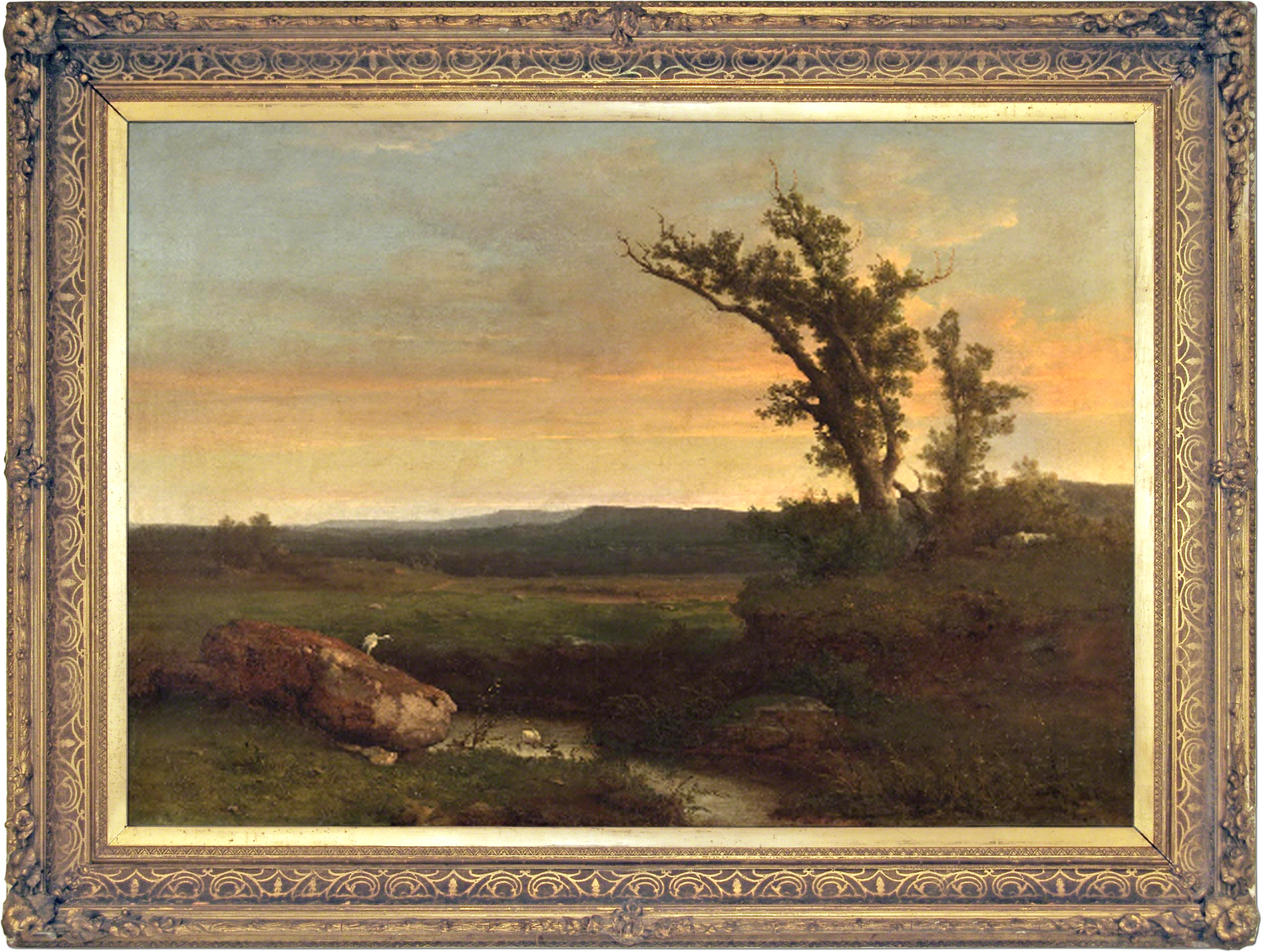GEORGE INNESS
Please check this page again as we continue to update with more George Inness paintings framed by Gill & Lagodich in both period and replica frames.
Paintings are shown chronologically.

GEORGE INNESS (1825 – 1894)
Twilight On The Campagna, Evening, 1851-1852, oil on canvas, 38" x 53-5/8", period 1850s American frame, gilded applied composition ornament and stenciled sand on wood. Framed by Gill & Lagodich for the Philadelphia Museum of Art. “Unburdened by narrative—a major shift for the young Inness—Twilight on the Campagna experiments instead with mood. The artist later declared that his primary goal was “not to instruct, not to edify, but to awaken an emotion.” The twisting, tortured trunks of the trees at right, silhouetted by the waning light, are melancholic and resonate with the dramatic scenes of Baroque master Salvator Rosa (1615–1673). Painted soon after Inness’s arrival in Italy, Twilight on the Campagna anticipates the poetic dimension that became the artist’s signature in the last decade of his life.” — museum label The Alex Simpson, Jr., Collection, 1945, 1945-5-1

GEORGE INNESS (1825–1894)
Summer in The Catskills, 1867, oil on canvas, 20 x 30-1/2 inches, c. 1860s American painting frame; gilded applied composition ornament on wood, molding width 5-3/4 inches. Edward B. Butler Collection, 1912.1837

GEORGE INNESS (1825 – 1894)
The Old Veteran, 1881, oil on canvas, 35-3/8 x 45-3/8 in. Framed by Gill & Lagodich for Chrysler Museum of Art. Period c. 1880s American painting frame, gilded applied composition on wood, molding width: 6 in. Painting Gift of Walter P. Chrysler, Jr.

GEORGE INNESS (1825 – 1894)
Looking Over The Hudson At Milton, 1886 – 88, oil on canvas, 27-1/16" x 22", period 1880s American Barbizon frame, gilded applied and cast ornament on wood. Framed by Gill & Lagodich for the Nelson-Atkins Museum of Art. “George Inness painted Looking Over the Hudson at Milton from memory in Montclair, New Jersey, five years after he had stopped spending his summers in Milton, New York. It shows the grand view beyond the back garden at the country home of a good friend of the artist. The steamboat in the middle ground and the ferry on the far bank of the river are reminders that, by the 1880s, Milton, like many other Hudson River towns, increasingly was being used as a vacation spot. Although Looking Over the Hudson at Milton was not painted directly from nature, its rich color, flickering light and vibrant brushwork recall French Impressionism, which was increasingly available to audiences in the United States in the late 1880s.”—museum gallery label Purchase: Nelson Trust, 33-87
